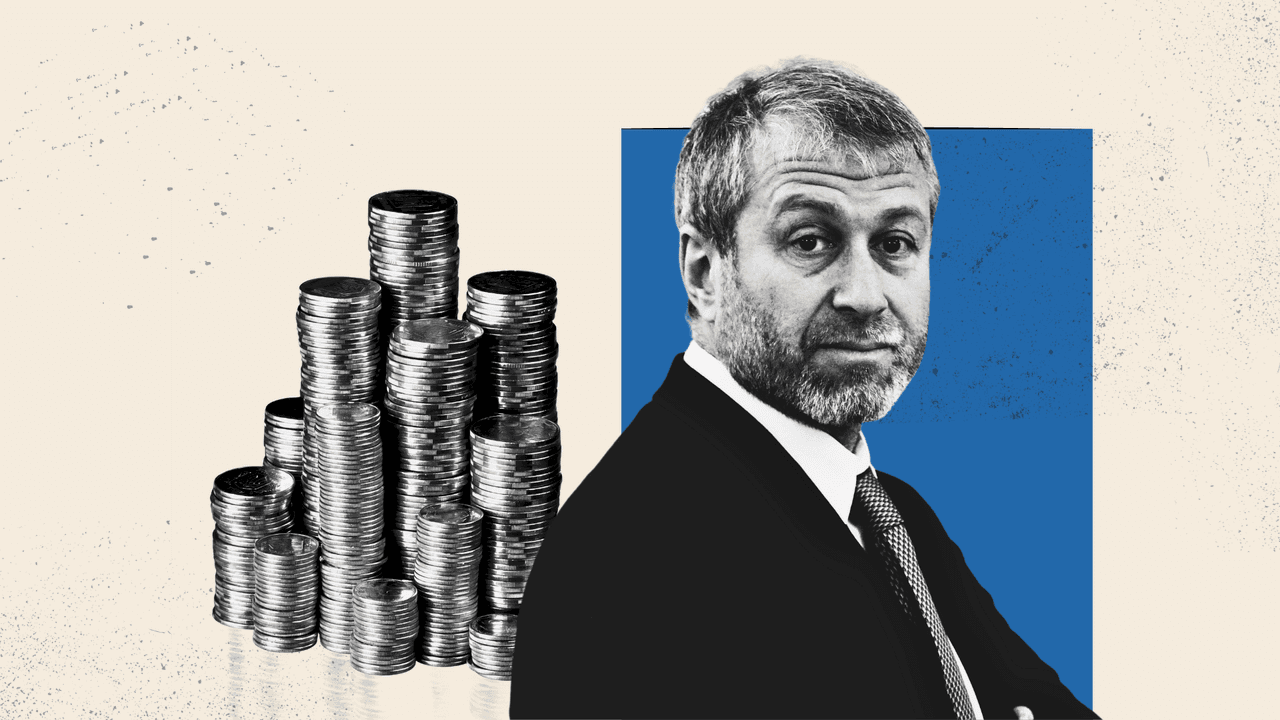
How Roman Abramovich became the face of Russian wealth
Roman Abramovich has long been Russia’s most famous oligarch. His takeover of Chelsea Football Club in 2003 launched him from faceless oil baron to international celebrity.
Abramovich’s image today is one of boundless wealth: private jets, superyachts, sprawling mansions. Chelsea amassed silverware under his tenure as he invested more than £2bn on new players, propelling the club to the pinnacle of English football.
But there’s a lesser known story behind the public image – that of Abramovich the businessman, a commodities magnate holding huge sway in Russian and global markets.
He is the biggest shareholder of Evraz, a steel-maker that was previously listed on the London Stock Exchange. He’s also held stakes in Highland Gold, a precious metals mining company, and RusAl, a Russian aluminium giant.
His large tangle of companies stretching across the globe have invested in everything from real estate to the legalised cannabis market.
The controversial deal that made him rich
Estimates of Abramovich’s net worth stand at about £6bn, according to the Sunday Times Rich List.
But he came from humble beginnings. Orphaned by the age of three, he was raised by relatives in Russia’s vast, remote Komi Republic.
He worked stints in the army and as a mechanic before moving to Moscow and into the world of business. He began trading commodities, and in particular oil.
In the mid-1990s, Abramovich struck big. In the economic turmoil following the collapse of the Soviet Union, he struck up a relationship with Boris Berezovsky, a flamboyant oligarch with strong ties to Boris Yeltsin, the first president of post-USSR Russia.
With Berezovsky’s help, Abramovich bought a controlling interest in the newly created oil company Sibneft from the government for $100m. It would rapidly become one of Russia’s top ten largest oil companies.
The Sibneft deal sprang from the Russian government’s “loans for shares” scheme, in which the Kremlin lent stakes in state assets in return for loans from the private sector.
Yeltsin’s government needed money urgently to pay government debts and fund an upcoming election campaign. The idea was that if the government defaulted on its loan payments (which it eventually did), the lenders kept the shares.
The scheme was reportedly mired in corruption; with allegations of rigged auctions, and shares transferred for what analysts consider to be a fraction of their value.
The result was the rapid transfer of assets from the state to the hands of a lucky few.
Not all of the 1990s “entrepreneurs” remained at the forefront of the Russian economy. Abramovich’s old ally Berezovsky fell out with Yeltsin’s successor, Putin, and went into exile.
Berezovsky later took Abramovich to court over the sale of his shares in Sibneft, sparking a long and messy legal battle – the biggest in the history of private litigation. Abramovich emerged victorious in 2012.
Other oligarchs, such as Mikhail Khodorkovsky who owned Russia’s then biggest oil company Yukos, also fell by the wayside.
But Abramovich prospered. He became the governor of Chukotka, an icy region in the north-east of Russia, a role he held for eight years. His business empire grew.
In 2005 Abramovich sold his stake in Sibneft back to state-owned oil company Gazprom for a staggering $13bn. The sum has formed the bedrock of Abramovich’s wealth since.
When the UK government sanctioned Abramovich in March 2022 in the wake of Russia’s invasion of Ukraine, forcing him to sell Chelsea, it noted he was “one of the few oligarchs from the 1990s to maintain prominence under Putin”. Abramovich has challenged similar sanctions in the EU, arguing that he was targeted because he was famous, rather than over any proven relationship with Putin.
What do the Cyprus Confidential files reveal?
It’s long been known Abramovich used offshore entities to manage his wealth. But new data from the Cyprus Confidential leak shows for the first time the vast scale of the operation.
The investigation has mapped Abramovich’s use of more than 200 offshore companies from Cyprus to the British Virgin Islands, a dozen trusts, and thousands of inter-company transactions shifting billions of dollars around the globe.
The files raise serious questions about how Abramovich used his money, how it could have benefited Vladimir Putin, and the effect on other industries, such as European football.
Earlier this year, TBIJ and The Guardian revealed how Abramovich appears to have secretly funded the takeover of Dutch football club Vitesse. Dutch football authorities are now investigating whether the payments broke rules.
These files reveal even more shadowy deals that may have undermined fair competition in top-flight football. They show his offshore entities made a series of off-the-books payments to agents involved in signing some of Chelsea’s biggest stars, and to other clubs. This could have artificially reduced costs that should have counted towards Chelsea’s spending limits.
The leak also reveals that Abramovich appears to have handed a secret stake in a huge Russian advertising company to a pair of Putin’s close friends, including Sergei Roldugin, the man known as “Putin’s wallet”.
The $40m deal, made in late 2010, is the clearest paper trail yet to show that there may have been a link between the former Chelsea football club owner and the Russian president. Abramovich has always denied a financial relationship with Putin.
Reporter: Simon Lock
Enablers editor: Eleanor Rose
Bureau editor: Franz Wild
Production editor: Frankie Goodway
Fact checker: Alex Hess
Our Enablers project is funded by Open Society Foundations, the Hollick Family Foundation, Sigrid Rausing Trust, the Joffe Trust and out of Bureau core funds. None of our funders have any influence over the Bureau’s editorial decisions or output.




